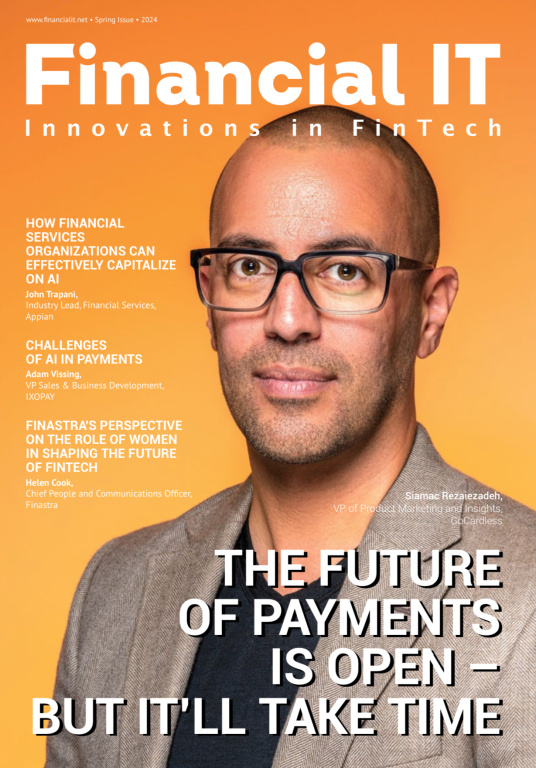Putting the Automotive Industry in Sixth Gear with Embedded Payments

- Nikhita Hyett, European Managing Director at BlueSnap
- 30.01.2024 01:15 pm #payment #card #transformation
Gone are the days of paying with physical cards for services such as on-demand hardware upgrades, roadside assistance, and refuelling. In today’s connected economy, our vehicles are now smart devices, equipped with the software and technology that empowers drivers to pay for the everyday maintenance of their cars.
It’s no surprise that automotive manufacturers are going into sixth gear to grow in-car payments with the typical UK driver spending a total of four years of their life in their vehicle. Coupled with the fact that almost nine in ten Europeans own a car, it’s safe to say the driver's seat is a part of the customer journey manufacturers intend to own.
This shift in focus comes amidst the maturation of the macro-trend ‘embedded payments’ - where non-financial companies like car giants offer payment services built into the vehicle software or ‘infotainment’ system. It’s a trillion-dollar opportunity waiting on the other side of the finish line, and it’s a win-win situation for businesses and consumers alike.
Why customers need in-car payments
In the hyper-connected society we live in today, one of the biggest pain points for drivers is payments. From financing a car to paying for fuel, the payment processes used within the automotive industry are out of date - this shouldn’t be the case as it should add to the overall customer experience.
The ability to pay for all the maintenance that comes with driving, from within your own vehicle, is now possible, thanks to the advancements of in-car interfaces. Technological developments have turned cars into connected devices – just like a computer or mobile phone. This means that car manufacturers can now collaborate with payment technology companies to integrate payments into their in-car systems and accompanying mobile apps.
The connection between smartphones and in-car dashboards is our first view of automobiles and commerce. Since 2001, drivers have been able to phone friends or use GPS services via Bluetooth. But the evolution of car software today opens the door to a much wider range of customer experiences.
For example, large manufacturers like Ford are already tapping into this opportunity. The automotive giant has connected its FordPass app - which is integrated into Ford vehicles - with other information such as food and drink locations and roadside assistance contacts. This means Ford drivers can now easily access a range of value-added services, while still in the driving seat. Other use cases include locating the nearest EV charging station and, thanks to embedded payments, the ability to pre-pay for charging and pay for subscriptions and add-ons chosen at their dealership.
This is a huge time saver for those who commute to work every day. Drivers are often in a hurry, and when you spend so much of your day behind the wheel, the interconnected nature of paying through your vehicle provides both speed and convenience.
Another great example is Mercedes Pay. The German automotive manufacturer’s partnership with Mastercard allows embedded in-car payments at the point of sale using fingerprint sensors - something that will allow convenient and secure payments in thousands of service stations. This is living proof that embedded payments are taking the automotive industry by storm.
For manufacturers that make this process as seamless and intuitive as possible, it can pay dividends. Not only by increasing brand loyalty but by providing carmakers with a key source of competitive difference.
The embedded payments appeal to manufacturing giants
As automotive manufacturers step into the payments game with embedded payments, they can expect to elevate a crucial part of the purchasing experience and keep drivers within their branded ecosystem - Making the driver's seat a valuable piece of commercial real estate.
Critically, customers no longer have to be rerouted to another payment gateway at the point of sale. This makes the purchasing experience for drivers much easier for drivers and reduces the burden of maintaining their vehicles.
This might not sound like a big deal, but the market value of embedded payments is expected to reach £2.1 trillion by 2026. That’s a three-fold increase on today’s levels.
Our research shows that of the non-financial companies already taking advantage of embedded payments, nearly half (48%) are doing so to gain a competitive advantage over their counterparts. Others are embedding payments to have better control over payment efficiencies and open the door to profit from new revenue streams.
The hurdles to mainstream adoption
As manufacturers move to process or ‘facilitate’ their own transactions, carmakers can bring the entire customer journey under one hood. This is the big selling point.
Redirecting customers to a separate channel can create an overwhelming level of friction that can derail consumers' intention to buy. Convenience and ease are the name of the game and businesses that offer this will earn customer loyalty.
That said, becoming a registered payment facilitator is no easy feat. It means building the required infrastructure, developing the software and acquiring the associated banking licenses. This is a complex process that requires detailed institutional knowledge and millions of dollars to succeed.
Rather than taking on this sizeable administrative and financial risk burden, there is another way. Automotive firms can choose to work with a pre-licensed payment partner to embed payments into their interfaces.
By doing so, they can earn revenue off payments faster, with zero hassle - as the payment partner manages all the technical underwriting required in the background.
Path forward
We’re at the early innings of in-car payments but it can reach mainstream adoption like other connected devices such as smart TVs or mobile devices. With leading brands like Ford recognizing the commercial horsepower of payments, more motorists will soon be able to enjoy the convenience, ease, and trust of paying this way.
This will only happen through greater collaboration between the fintech and automotive space. Ultimately, car giants are hardware companies with long internal processes, meaning there’s a strong need for a fast, agile, and technical partner to accelerate innovation. As we look to 2024 and beyond, it’s safe to say this collaboration will only proliferate and our next car could be a ‘wallet on wheels’.





















